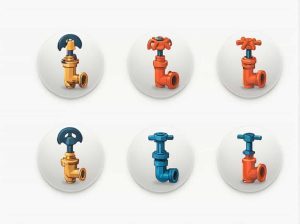Threads are essential in mechanical assemblies providing secure fastening for various applications. However one of the major downsides of threaded connections is their susceptibility to galling. This phenomenon can lead to damaged components increased maintenance costs and potential system failures.
This topic explores what galling is why threads are prone to it and how to prevent it in different applications.
What Is Galling?
1. Definition of Galling
Galling is a type of adhesive wear that occurs when two metal surfaces rub against each other under high pressure. This friction causes microscopic material transfer between the surfaces leading to seizing welding or tearing of the material.
2. How Galling Affects Threads
Threaded fasteners experience significant friction during tightening and loosening. If galling occurs the threads can lock together making it nearly impossible to remove the fastener without damage. In severe cases galling can strip the threads or cause bolts to break.
Why Are Threads Susceptible to Galling?
1. High Contact Pressure
Threads create multiple points of contact where surfaces slide against each other. During tightening pressure increases making metal surfaces more prone to welding together at a microscopic level.
2. Lack of Lubrication
Dry threads generate more friction increasing the likelihood of galling. Without proper lubrication metal surfaces can bond together and tear apart during disassembly.
3. Soft or Similar Materials
Fasteners made from stainless steel aluminum or titanium are more prone to galling. These materials have a high tendency to adhere to themselves making galling more common when both the bolt and nut are of the same material.
4. High-Speed Tightening
When fasteners are tightened too quickly excessive heat builds up between the threads. This heat softens the metal leading to higher friction and an increased risk of galling.
Common Situations Where Galling Occurs
- Automotive and Aerospace Applications – High-performance vehicles and aircraft use lightweight materials like titanium and aluminum which are highly prone to galling.
- Industrial Machinery – Heavy-duty equipment that requires frequent assembly and disassembly can suffer from galling-related thread damage.
- Marine Environments – Stainless steel fasteners used in saltwater conditions experience higher friction and corrosion increasing galling risks.
How to Prevent Galling in Threads
1. Use Proper Lubrication
Applying a lubricant such as anti-seize compounds or thread lubricants can reduce friction and prevent galling. Some commonly used lubricants include:
- Molybdenum disulfide
- PTFE (Teflon) coatings
- Nickel-based anti-seize compounds
2. Choose Different Materials
Using fasteners made from dissimilar metals can help reduce galling. For example pairing a stainless steel bolt with a bronze or coated nut can lower the risk of adhesion.
3. Slow Down the Tightening Process
Avoid using high-speed power tools for tightening fasteners. Instead use a controlled steady application of torque to reduce heat buildup and friction.
4. Use Coated or Plated Fasteners
Thread coatings such as zinc cadmium or black oxide can create a protective layer that reduces direct metal-to-metal contact. This helps minimize friction and prevents material transfer.
5. Select Proper Thread Design
Coarse threads are generally more resistant to galling than fine threads because they have a larger pitch and fewer contact points reducing friction during tightening.
6. Inspect and Clean Threads
Before installation check fasteners for damage dirt or corrosion. Dirty or damaged threads increase friction making them more susceptible to galling.
Effects of Galling on Mechanical Systems
1. Difficulty in Disassembly
Once galling occurs removing a fastener can become extremely difficult. In some cases the only solution is to cut or break the bolt leading to time-consuming repairs.
2. Thread Damage and Component Failure
Galled threads often suffer permanent damage making fasteners unusable. If critical components are affected this can lead to catastrophic failures in machinery or structural systems.
3. Increased Maintenance Costs
Frequent galling issues require regular inspections replacements and repairs increasing maintenance expenses. This is especially problematic in industrial and aerospace applications where reliability is essential.
Galling is a common but preventable issue in threaded connections. By understanding its causes and implementing preventive measures such as lubrication material selection and proper tightening techniques engineers and technicians can minimize thread damage and improve fastener longevity.
Whether working in automotive aerospace or industrial settings addressing galling ensures safer more reliable mechanical systems with reduced maintenance costs.



